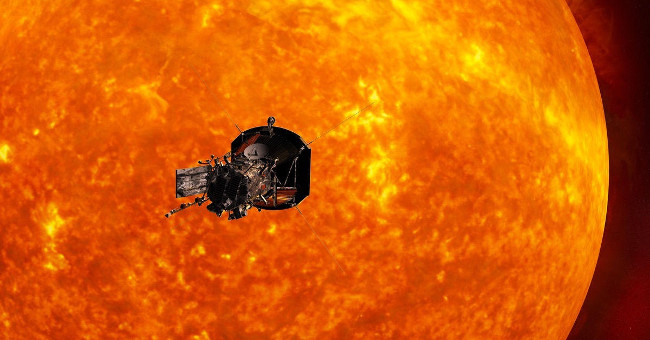NASA launches a spacecraft to explore the sun's mystery in 2018
NASA plans to launch an unmanned probe to the Sun to find answers to the three great mysteries of the star.
In 2018, NASA plans to launch an unmanned probe called Solar Probe Plus to the Sun, according to Live Science. The Earth lies 149 million kilometers from the Sun, and the Solar Probe Plus is expected to reach a position 6 million kilometers from the Sun.
"This is the first human mission to fly to the Sun. We cannot reach the surface of the Sun, but the spacecraft will approach close enough to answer three important questions ," said Eric Christian. worked at NASA's Goddard Space Flight Center in Greenbelt, Maryland, said.

NASA sent the Solar Probe Plus spacecraft to the Sun in 2018. (Photo: Live Science.)
First, this mission helps explain why the Sun's surface is not as hot as its atmosphere, or the coronary ring . The surface of the Sun has a temperature of about 5,500 degrees Celsius, while the upper atmosphere is 2 million degrees Celsius.
"It is often farther away from the heat source. The sun's atmosphere is hotter than the surface is really a big mystery ," Christian said.
Second, scientists want to find answers about how the solar wind accelerates."The Sun blows a stream of charged particles in all directions at a rate of 1.6 million km / h. But we don't understand how it accelerates," Christian said.
Third, the mission of Solar Probe Plus helps identify the cause of the occasional high-energy particles of the Sun, which could be dangerous for astronauts and unprotected spacecraft.
Spacecraft flying at a distance of 6 million km from the Sun face many challenges, of which the temperature is too high. To address this problem, NASA scientists designed a shield made of composite material on a 11.4 cm thick carbon fiber base. It is able to withstand temperatures outside the spacecraft about 1.370 degrees Celsius.
In addition, the spacecraft is equipped with special radiators that can release the heat absorbed through the ship's shield into space, to protect the internal electronics from being damaged.
- NASA launches the spacecraft to explore the Moon's atmosphere
- China launches the Lunar Explorer spacecraft
- Historical landmarks for NASA's 60 years of space exploration
- Many planets have two suns
- NASA returned to the moon
- NASA launches satellites to explore the mysterious region of the atmosphere
- Video: 3 suns together in Russia
- NASA's new generation spacecraft rocket launcher
- NASA's new spacecraft begins its mission to explore the world
- 10 most outstanding achievements in NASA history
- NASA launches a spacecraft to the Moon
- NASA launches a spacecraft looking for extraterrestrial life
 Van Allen's belt and evidence that the Apollo 11 mission to the Moon was myth
Van Allen's belt and evidence that the Apollo 11 mission to the Moon was myth The levels of civilization in the universe (Kardashev scale)
The levels of civilization in the universe (Kardashev scale) Today Mars, the sun and the Earth are aligned
Today Mars, the sun and the Earth are aligned The Amazon owner announced a secret plan to build a space base for thousands of people
The Amazon owner announced a secret plan to build a space base for thousands of people